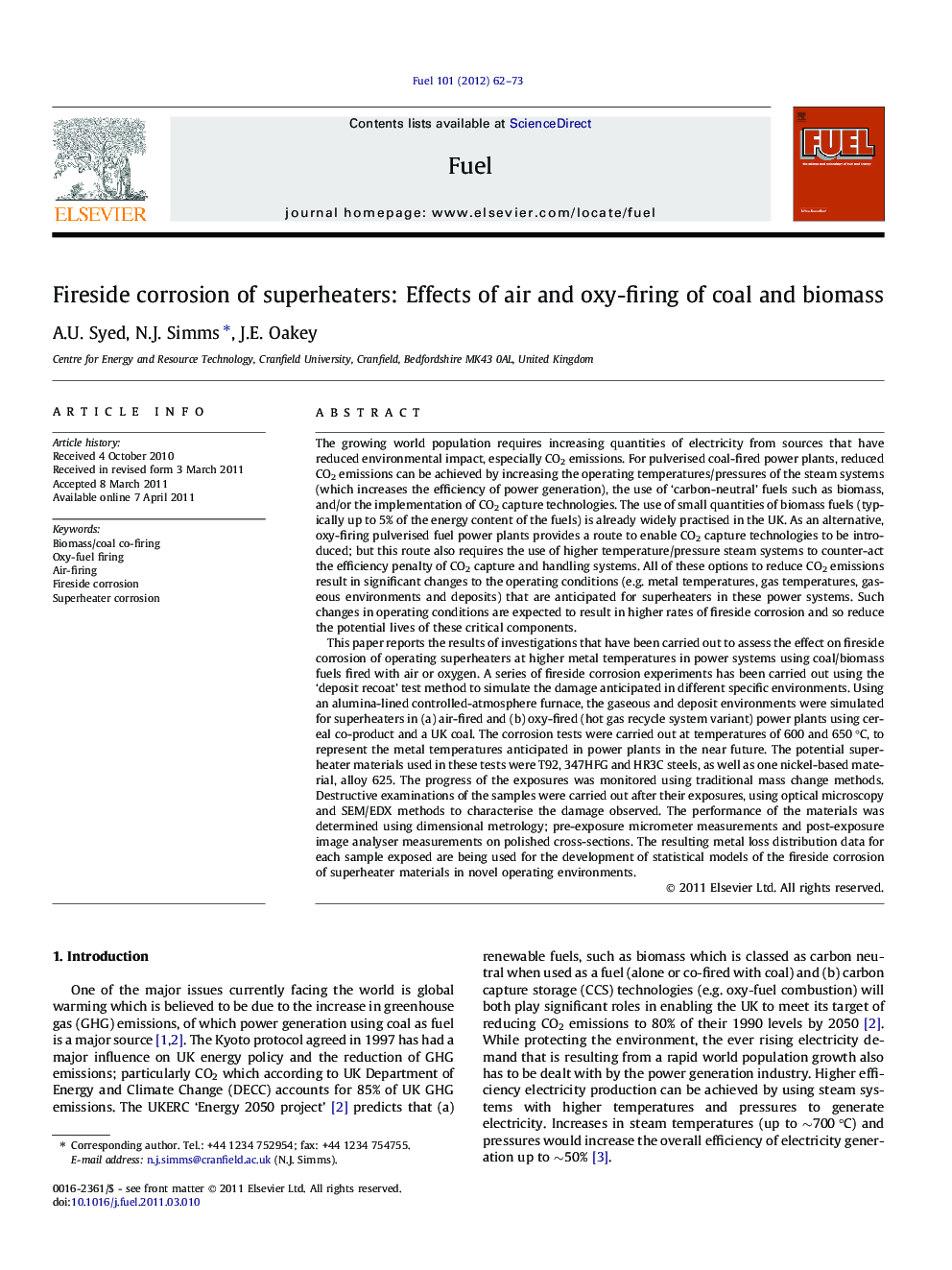| کد مقاله | کد نشریه | سال انتشار | مقاله انگلیسی | نسخه تمام متن |
|---|---|---|---|---|
| 206366 | 461181 | 2012 | 12 صفحه PDF | دانلود رایگان |

The growing world population requires increasing quantities of electricity from sources that have reduced environmental impact, especially CO2 emissions. For pulverised coal-fired power plants, reduced CO2 emissions can be achieved by increasing the operating temperatures/pressures of the steam systems (which increases the efficiency of power generation), the use of ‘carbon-neutral’ fuels such as biomass, and/or the implementation of CO2 capture technologies. The use of small quantities of biomass fuels (typically up to 5% of the energy content of the fuels) is already widely practised in the UK. As an alternative, oxy-firing pulverised fuel power plants provides a route to enable CO2 capture technologies to be introduced; but this route also requires the use of higher temperature/pressure steam systems to counter-act the efficiency penalty of CO2 capture and handling systems. All of these options to reduce CO2 emissions result in significant changes to the operating conditions (e.g. metal temperatures, gas temperatures, gaseous environments and deposits) that are anticipated for superheaters in these power systems. Such changes in operating conditions are expected to result in higher rates of fireside corrosion and so reduce the potential lives of these critical components.This paper reports the results of investigations that have been carried out to assess the effect on fireside corrosion of operating superheaters at higher metal temperatures in power systems using coal/biomass fuels fired with air or oxygen. A series of fireside corrosion experiments has been carried out using the ‘deposit recoat’ test method to simulate the damage anticipated in different specific environments. Using an alumina-lined controlled-atmosphere furnace, the gaseous and deposit environments were simulated for superheaters in (a) air-fired and (b) oxy-fired (hot gas recycle system variant) power plants using cereal co-product and a UK coal. The corrosion tests were carried out at temperatures of 600 and 650 °C, to represent the metal temperatures anticipated in power plants in the near future. The potential superheater materials used in these tests were T92, 347HFG and HR3C steels, as well as one nickel-based material, alloy 625. The progress of the exposures was monitored using traditional mass change methods. Destructive examinations of the samples were carried out after their exposures, using optical microscopy and SEM/EDX methods to characterise the damage observed. The performance of the materials was determined using dimensional metrology; pre-exposure micrometer measurements and post-exposure image analyser measurements on polished cross-sections. The resulting metal loss distribution data for each sample exposed are being used for the development of statistical models of the fireside corrosion of superheater materials in novel operating environments.
Journal: Fuel - Volume 101, November 2012, Pages 62–73